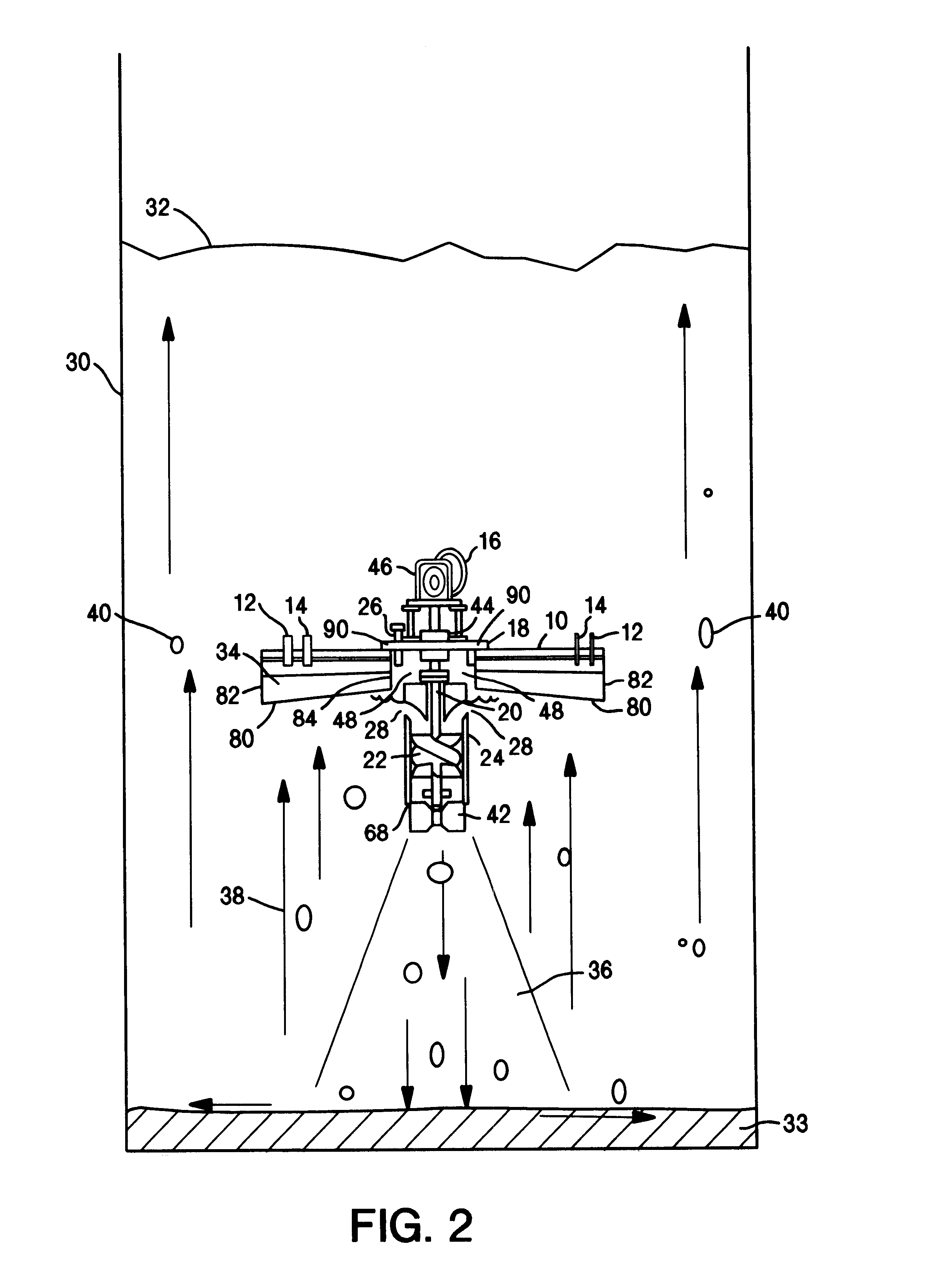Submersible in-situ oxygenator
a technology of oxygenator and in-situ oxygen, which is applied in the direction of machines/engines, chemical/physical processes, domestic heating, etc., can solve the problems of contaminating soil or underground water, no longer allowing wastewater containing land-banned chemicals, and many potential environmental problems of construction
- Summary
- Abstract
- Description
- Claims
- Application Information
AI Technical Summary
Benefits of technology
Problems solved by technology
Method used
Image
Examples
Embodiment Construction
)
In describing the preferred embodiment of the present invention, reference will be made herein to FIGS. 1 to 3 of the drawings in which like numerals refer to like features of the invention. Features of the invention are not necessarily shown to scale in the drawings.
As shown in FIGS. 1 and 2, the apparatus of the present invention comprises a gas-liquid aerator device 50, adapted to be submerged in deep tank 30 containing liquid 32 and solid 33. In the preferred embodiment, liquid 32 is wastewater and solid 33 is sludge formed in deep tank 30. Device 50 includes a fluid pump, such as an impeller, a jet flow pump or a positive displacement device, which can draw in a liquid and a gas, and cause the movement of the liquid and gas downwardly at a high velocity. In the preferred embodiment, device 50 comprises a submergible motor 16 connected to motor support plate 18 and a rotatable shaft 20. An impeller 22 is connected to shaft 20, and impeller 22 and shaft 20 are preferably dispose...
PUM
| Property | Measurement | Unit |
|---|---|---|
| Time | aaaaa | aaaaa |
| Size | aaaaa | aaaaa |
| Volume | aaaaa | aaaaa |
Abstract
Description
Claims
Application Information
 Login to View More
Login to View More - R&D
- Intellectual Property
- Life Sciences
- Materials
- Tech Scout
- Unparalleled Data Quality
- Higher Quality Content
- 60% Fewer Hallucinations
Browse by: Latest US Patents, China's latest patents, Technical Efficacy Thesaurus, Application Domain, Technology Topic, Popular Technical Reports.
© 2025 PatSnap. All rights reserved.Legal|Privacy policy|Modern Slavery Act Transparency Statement|Sitemap|About US| Contact US: help@patsnap.com



